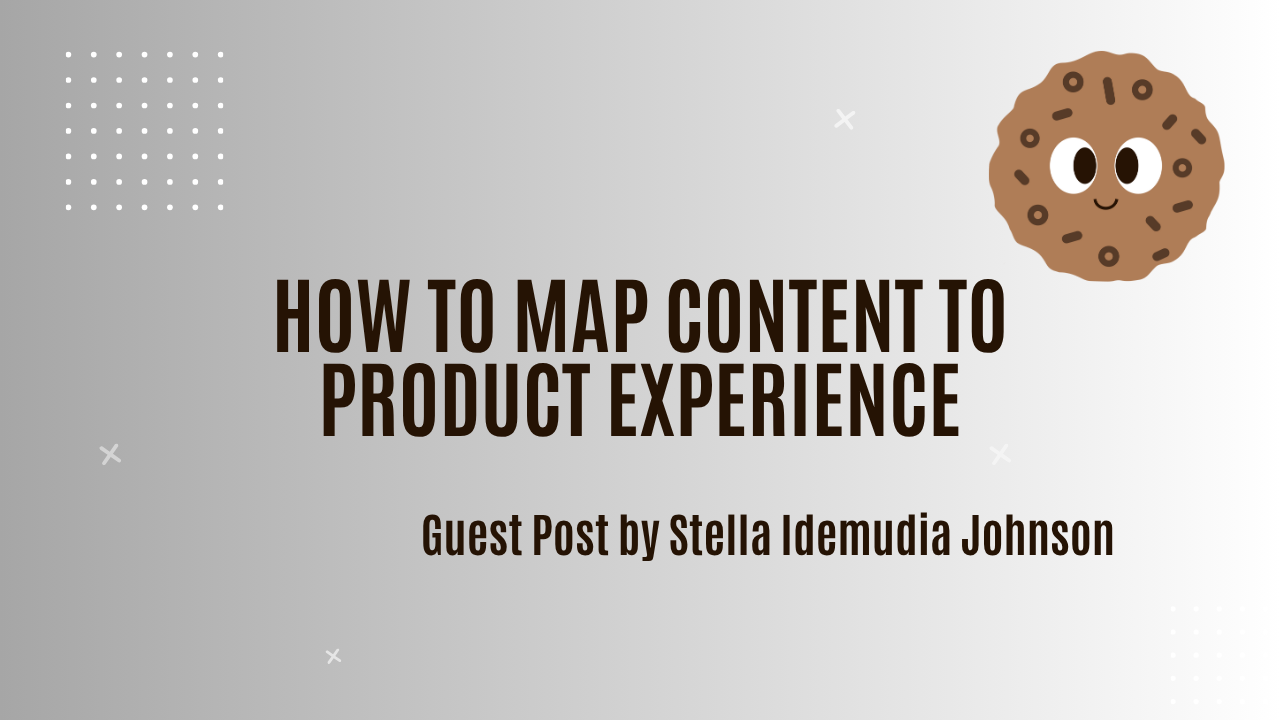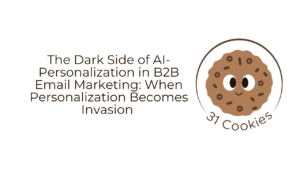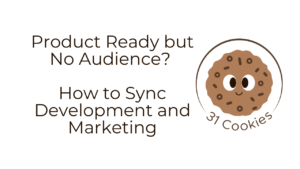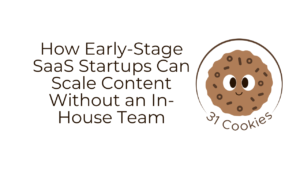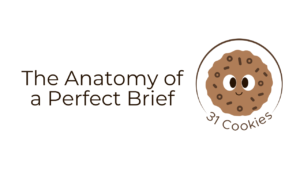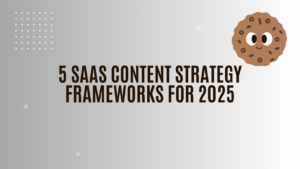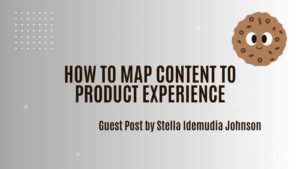Traffic isn’t the problem. And in SaaS, it never really was.
Traditional keyword-first SEO isn’t built for SaaS. It chases search terms but ignores how people actually use your product, creating a disconnect between your content and the real user journey.
The solution: a product-led SEO strategy that aligns with user intent and supports the entire product journey, from discovery to adoption.
This article breaks down what product-led SEO is, why it matters for SaaS today, and how to build your strategy, with real examples to learn from.
What is Product-Led SEO?
Product-led SEO is an approach where your traffic strategy is built around how people use your product, rather than chasing high-traffic keywords.
The term ‘product-led SEO’ was popularized in 2021 by Eli Schwartz in his book Product-Led SEO. He describes it as showing up for users when it matters most—during discovery, friction, adoption, and retention.
An excerpt from his book.
Unlike traditional SEO methods focused on keywords and capable of delivering quick wins in a quarter, product-led SEO doesn’t always look impressive at first glance. It’s slower. Quieter. Less obsessed with volume spikes.
Which brings us to the next question:
Why bother?
Why Product-Led SEO Matters for SaaS Growth
Unless you’re perfectly fine with traffic that never translates to revenue or you have deep enough pockets to run paid ads forever, product-led SEO isn’t optional.
Traditional SEO is great for visibility. But SaaS growth depends on what happens after the click. Activation, usage, retention, and expansion are driven by one thing: your product experience.
That’s where product-led SEO earns its keep. It helps you create content that mirrors the user’s real journey. Not just what they Google, but what they’re trying to do next.
It also means your content doesn’t sit in isolation. It’s tied to actual product moments and alignment that support onboarding, answer in-app questions, and build confidence at every stage.
Traditional SEO can help your SaaS company rank, but product-led SEO helps it grow. And as a by-product of that growth? You eventually rank anyway.
| 🍪TL;DR: Product-led SEO bakes growth into your content. It aligns with how users experience your SaaS, not just what they Google. Less sugar-rush spikes, more sustained traction. |
How to Map Content to Product Experience (The Product-Led SEO Framework)
We won’t pretend we don’t love traffic, we do. At 31 Cookies, we optimize for it too. But what really matters is traffic that moves users through your product. That’s what pays the bills.
This step-by-step framework helps you turn SEO into a SaaS content strategy that supports onboarding, boosts adoption, and drives real growth by tying content to user intent and key product moments.
Step 1: Map User Intent to Product Touchpoints
Traditional SEO asks, “What are people Googling?” and that’s been the go-to for years. But product-led SEO, the kind that actually drives ROI, asks, “What’s the user trying to do?” That’s where the real dough is. 🍪
As Eli Schwartz points out, most SEO efforts begin with a keyword list and churn out content like a factory. But real momentum comes from knowing your users beyond just the funnel.
- What do users do at each stage?
- Where do they get stuck?
- What are they trying to figure out?
This is user intent mapping, and it serves as your foundation. Instead of asking “What can we rank for?”, ask “What do users need to do and where can content smooth that path?”
Drops, the language learning app, didn’t stress over whether “learn German fast” had 30K or 3K searches. They focused on real use cases, making the in-app experience smooth and building visual-first vocab pages that matched how users actually wanted to learn.
Drops created content for every language they translate to, ranking or not.
It didn’t spike traffic overnight. However, by the second month, daily visits had increased tenfold. By the end of the year, they were hitting 30 million monthly impressions. No keyword tool saw it coming.
But the product did.
Step 2: Build Content Around Use Cases, Not Just Topics
Once you’ve mapped the user journey, create content that reflects how people actually use your product, not just what they Google.
That means:
- Feature-focused tutorials
- “How we do X with [your product]” templates
- Customer stories tied to real product value
- Pages that show how your product solves the problem, not just claim it does
These types of assets become your bottom and mid-funnel power plays. They convert. They rank over time. And they give you something most blog content never does: context.
Say you run a SaaS product for user onboarding. What’s more likely to drive signups? A generic post on “how to onboard customers” or a feature walkthrough that helps users hit their first success milestone?
Exactly.
Notion does this brilliantly. Their template gallery is a growth engine, packed with real use cases—such as content calendars, CRMs, and hiring pipelines. Each one comes with a walkthrough that shows it in action. It’s not “Here’s what Notion can do,” it’s “Here’s how people actually use it.”
To sweeten the dough, users get paid to upload templates on the Notion site.
They’ve nailed mid-funnel intent, too. Google “Notion project management” and you’ll land on a page that’s part feature tour, part tutorial, part landing page. Rather than just talk about productivity, they’ve built it into the experience.
Step 3: Tie Content KPIs to Product Metrics
AI is changing how people search, and zero-click results mean users often stay on Google instead of visiting your site. That makes old-school SEO metrics less useful.
If you’re only tracking clicks, rankings, and time on page, you’re missing out on real insights that could improve your product, UX, and content.
Traffic, CTR, and rankings only matter if they lead to actual product impact.
Here’s a table explaining how they meet:
| 🍪Content KPI | What it indicates | Related Product Metrics |
| Organic Traffic | Search visibility and interest | Trial sign-ups, page-led onboarding entries |
| CTR (Click Through Rate) | Relevance of your title/ meta description to user intent | PQLs from BOFU assets |
| Time on Page/Scroll Depth | Content engagement, skimmability, and usefulness | Feature activation, product tour completion |
| Keyword Ranking | Topic authority & competitive edge | Repeated brand queries and branded signups |
| Engagement with CTA | Navigation to product pages and next steps | Free trial conversions, feature usage |
| Bounce Rate | Mismatch between topic and intent | Low activation or high churn flags. |
Content isn’t just for marketing. It should help onboard users, cut churn, and warm up leads. If it isn’t, something is missing.
Step 4: Make Content Part of the Journey, Beyond the First Click
A click is nice, but activation is the real win.
Product-led SEO shouldn’t stop at the blog. It should help users go from ‘what is this?’ to ‘this solves my problem.’ That’s why content needs to be part of the product experience.
Let’s talk assets that actually do some heavy lifting:
- Feature tours built right into blog posts
- Help docs that rank for things like ‘how to connect X to Y in your product’
- Checklists, templates, and tools that solve a task faster than your competitors can say ‘keyword gap’
This is the kind of content that drives activation, shortens time-to-value, and even boosts retention. It turns your content from a loudspeaker into a helpful walkthrough.
Take Amplitude, for example.
Their product-led SEO doesn’t end at high-level blogs. They weave product walkthroughs right into mid-funnel articles, showing how specific features solve use cases such as cohort analysis or funnel drop-off.
Users are not just reading about analytics, but also learning how to use their tool without leaving the page. That’s content and product alignment in action.
Even their docs section pulls long-tail traffic thanks to clear titles that reflect user intent mapping. Google something like “how to create a retention chart in Amplitude,” and boom—their documentation or academy content meets you right where you are.
And yes, Reddit calls those things SEO goldmines. Because they are.
Step 4: Avoid the ‘Over-Optimization Trap’
Yes, optimize. Please do. Just don’t create Franken-content stitched together with keywords, CTA buttons, and lifeless subheadings that sound like an SEO intern lost their soul mid-sentence.
Keyword density no longer works for SEO for SaaS companies in 2025. Optimize, yes. But keep the content useful.
Ask yourself these three things before hitting publish:
- Does it help someone take action in the product?
- Does it match where they are in their journey?
- Can they find what they need without digging forever?
If you’ve already mapped user intent, you’ve got these answers. That’s what stops you from writing a 2,000-word post on workflow automation without once showing how your product actually does it.
Want a solid example? Check out Webflow’s blog; like this post on building design systems for marketing teams. It’s practical, clearly written by someone who’s done the work, and it shows how Webflow solves those problems without screaming “SIGN UP NOW!”
That’s what great SaaS content looks like: useful, keyword-driven, and tied to the product.
Product-Led SEO in Action: Real Examples from SaaS Companies
Now that we’ve mapped the framework, let’s talk about what this looks like out in the wild from brands doing it right.
Doing it right: Ahrefs
Ahrefs sells an SEO tool, but their content goes further than just explaining SEO concepts. Their blog walks you through real SEO tasks using their product, complete with screenshots and clear CTAs that say ‘Go try this.’
If you search ‘how to optimize for robots and readers,’ you won’t find a generic listicle. You’ll get a practical, tool-based guide that shows exactly how to do it inside Ahrefs.
This is product-led SEO in action:
- It meets the search intent
- It shows the product in context
- It helps users go from ‘I get it’ to ‘I want it’
You’re not being sold to. You’re just getting the answers you need, fast.
Doing it right: Canva
Here’s what a Reddit user had to say after analyzing Canva’s product-led SEO approach:
Canva has perfected product-led SEO by integrating templates (actual pieces of their product) right into searchable pages. Want “Instagram story templates”? You click, land on a ready-to-use design, and start editing instantly.
Users note how “their template pages are super well structured for crawlers AND users” and use schema markup effectively to boost rankings and engagement.
That’s content and product alignment in its purest form: content that demonstrates product value while serving user intent mapping at scale.
Doing it right: Taskade
John, the CEO of Taskade, an all-in-one AI-powered productivity platform, shared in a Reddit thread how they were able to triple their traffic for the Taskade templates.
Guess what it was? Product-led SEO content marketing strategy.
These template pages match real product use cases, include templates users can actually use, and target search terms like ‘best task templates.’ It’s content that’s built to drive action, not just clicks.
They didn’t just write about workflows. They turned them into templates. It’s a smart take on intent mapping that gives users what they need even before signing up. And it worked.
Now, it’s your turn.
Getting traffic but no activation? Start with these questions:
- Where is the user in their journey when they land here?
- What’s the next step this content nudges them toward in the product?
- Is it answering what they actually need, or just what they Googled?
If you’re mostly thinking “Uhh… not sure,” congrats — you’ve found your first clue.
| 🍪 Quick check: Look at your top five blog posts. Do they connect to onboarding, adoption, or retention? Or are they just ranking for keywords without adding anything useful to the product experience? |
And hey, if this whole Product-led SEO and SaaS content strategy thing feels like balancing a tray of cookies while jogging uphill, we know a cookie agency that is just right for the task!
31Cookies doesn’t just talk about product-led content; we run on it. We’ve helped SaaS brands stop chasing empty traffic calories and start building content that converts, sticks, and scales.
So if your SEO strategy feels half-baked, we know a thing or two about turning clicks into customers.
| 🍪TL;DR: Bake content your users actually want to bite into. But, please don’t leave them staring at the cookie without telling them where the milk is. |
Let your content guide the next click. The next action. The next aha moment.
Because at the end of the day, SEO that doesn’t feed growth is just empty carbs. 🍪

